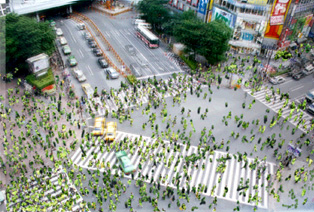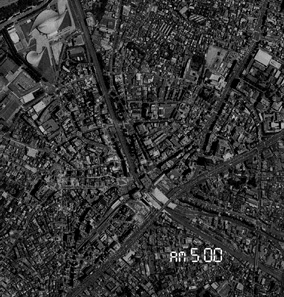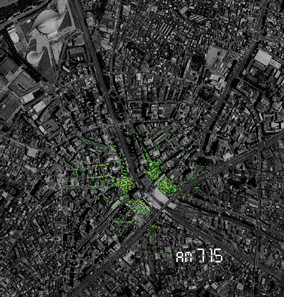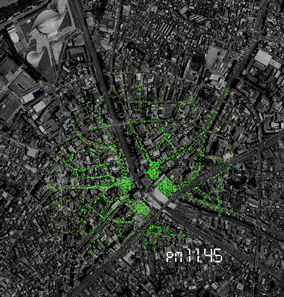Wearable Park

公園を着る
従来、公園は各々の地域ごとに配置され、世代を越えたコミュニティ形成の中心として機能してきた。だが、人々の行動範囲は拡大し、情報が多様化する中で従来の「場」に見い出していたコミュニティは、例えば女子高生はルーズソックス、ビジネスマンはスーツにネクタイという「記号」により形成する傾向にある。
批判的な意見の多い公共空間での着替えや携帯電話のおしゃべり、床に座り込む「地べたリアン」の出現は一方で、従来の「場」によって仕切られる私的空間と公共空間の壁が、「記号」により認識される新たなライフスタイルへの変換と言えないだろうか。
高密度な都市の公園を「場」としてのコミュニティから「記号」としてのコミュニティに変換する。つまり、公園を携帯することによって環境保全の意図をより身近なものとし、「都市という身体の一部である自分」を実感するのだ。公園は都市の内部に行き渡ると同時に、人々の意識内にも行き渡り、脱建築的であるにもかかわらず、それは立体的に構成されていくだろう。
In the past, parks were created in each districts, and they functioned as a center for creating the community which transcended the generation gap. However, people’s field of activities are expanded, and as information diversify, community which depended on the space is increasingly replaced
by community of code, such as female senior high school students’ loose
socks, and businessmen’s suit and tie.
The advent of highly criticized change of clothes and talking on cell phone in the public space, and the advent of “Jibetarian” (person sitting on the ground), can be considered as the wall between the private space and public space which was divided by space is now transformed as a new life style recognized by “code.”
In the high-density city parks, we change the community as a place into community as “code.” In other words, by carrying the park just like carrying the cell phone, one makes the aim of the environment conservation closer to himself, and realizes that one is “a part of a body known as city.” The park pervades inside the city, and pervades into people’s consciousness, and even though it is post-architectural, it will be constructed three-dimensionally.
Collaboration|玉崎修平
第33回セントラル硝子国際建築設計競技「都市の立体公園」最優秀賞




